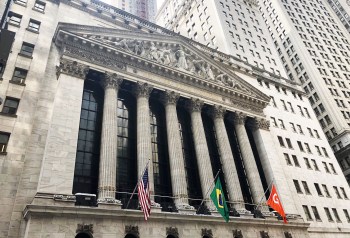A catalog of strange market turns
Share Now on:
A catalog of strange market turns
Stock markets are, by definition, volatile. They go up and down at a moment’s notice and sometimes, it seems, on a whim. Sometimes it’s politics that makes the market move; sometimes it’s war … sometimes it’s just the weather.
Sometimes, though, it’s something truly odd. Watching the stock markets every day is part of our job at Marketplace, as is gathering opinion from traders and investors about what’s making them volatile. So we are going to start cataloging some of the stranger things that have been blamed for making the market move.

The 1600s: Tulipmania
In the 1600s, tulips caused one of the more memorable market reversals. The event became known, infamously, as “Tulpenwoede.”
Prices of tulip bulbs skyrocketed as wealthy merchants competed to create the most beautiful gardens, filled with exotic varietals of these trendy flowers. A futures market for tulips was even created, and investors investors put up their houses as collateral as they rushed to buy the best and most rare bulbs.
Just before the crash, one type of tulip bulb was priced at 5,500 guilders per bulb. That’s about $55,000, in today’s money, according to some calculations. Yes, for a single tulip bulb. No one is really sure what caused the market in tulip bulbs to reverse, but reverse it did, with a resounding thud in February 1637, leaving many investors bankrupt.
2010: Fat Finger
On May 6, 2010, the stockmarkets crashed…hard. The Dow Jones Industrial Average shed almost 1,000 points in seconds, in what’s now known as the “Flash Crash.” It wasn’t long before shares recovered most of the ground they had lost, but the market closed down that day. The sudden downward bounce had the financial world scratching its collective head over what had gone wrong.
There were plenty of theories, but here’s one that deserves a highlight: You know that feeling in the pit of your stomach when you realize you accidentally hit “reply all”? Well, multiply that by a billion, and you can guess what one particular trader was feeling on the afternoon of May 6. A rumor spread that some unfortunate person might have accidentally entered an order to sell a billion shares when he meant to sell just a million.
The “Fat Finger” theory, if you will.
In the end high-frequency computer trading got most of the blame, although defenders of HFT say that while computers may have made the market move so fast, they helped it recover quickly, too. The jury’s still out on what the trigger for the sell-off might have been. Either way, exchanges were directed to implement “circuit-breakers,” to halt trading when a market or asset went sharply up or down.
There’s a lot happening in the world. Through it all, Marketplace is here for you.
You rely on Marketplace to break down the world’s events and tell you how it affects you in a fact-based, approachable way. We rely on your financial support to keep making that possible.
Your donation today powers the independent journalism that you rely on. For just $5/month, you can help sustain Marketplace so we can keep reporting on the things that matter to you.


















